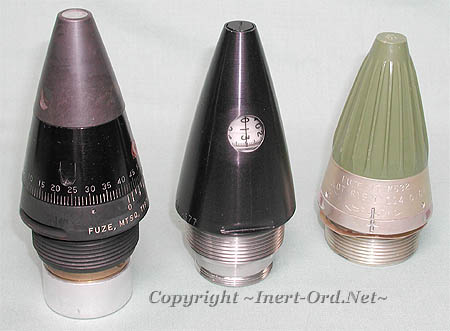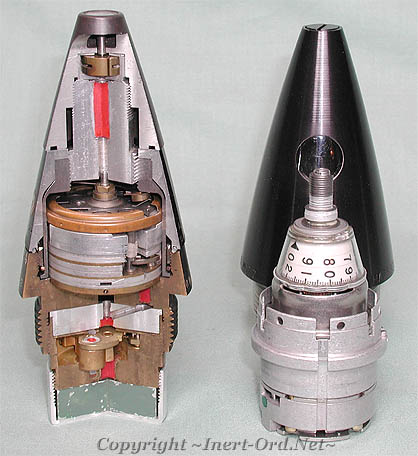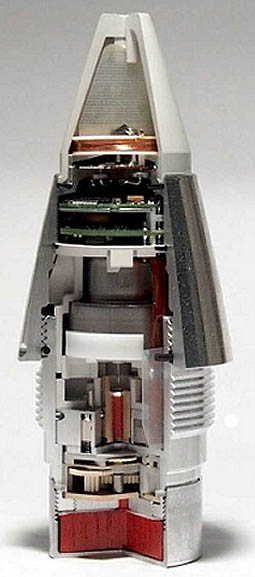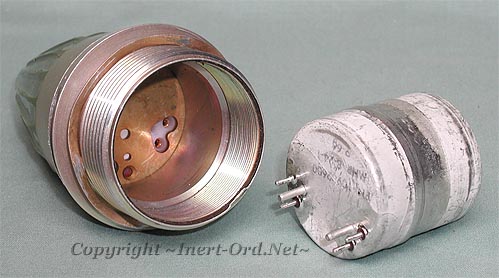 Without a proper fuze, artillery would be pretty much useless.
Without a proper fuze, artillery would be pretty much useless. In the mid 19th century two basic types were in use, Time Delay and Impact. Time fuzes were combustion types, consisting of a burning fuse train, ignited upon firing. There were various designs, but all were only accurate to approximately the nearest 1/2 or 1/4 sec at best.
During the First World War, combustion time fuzes became more refined and early attempts at mechanical time devices were begun.
By WWII, the Mechanical Time Fuze was refined to a precision instrument and a new type, the Proximity Fuze, using radio technology was created.
Today, different functional fuze types have been combined into the Multi Option Fuze for Artillery (MOFA). Microprocessor controlled, battery operated and programmable, the MOFA is an all-purpose artillery fuze for bursting munitions.
Features include:
o Point Detonating Impact Super Quick (PDSQ)
o Delay Time after target impact. (5 to 10ms)
o Proximity Distance (9 to 10 m height of burst over normal terrain)
o Time Delay, 0.5 sec to 199.9 sec in 0.1-sec increments, w/ PDSQ backup.


Modern MOFA Fuze (German)
Utilizes modern micro-chip technology and light weight materials, while still maintaining mechanically driven safety features.
Above left, is a sectioned Mechanical Time Super Quick M564 Fuze (Development model T197E2 ) produced during the late 1960's and early 70's for 105mm, 155mm and 8in. projectiles. It has a 2-100sec selectable delay with a Point Detonating back-up. There is a safety at the nose and a delay arming mechanism (DAM) at the bottom, which aligns the detonator with the booster only after the shell has traveled a safe distance (200 ft from the muzzle). The timer is powered by an internal main spring. The safety adapter (lower timer) is powered by centrifugal force generated by the spinning projectile. This fuze was likely manufactured by Hamilton Watch Company, who produced about 20 million of them at a cost of about $15.50 each (1970 dollars). (Thanks Sam for the details!)
Next is the Mechanical Time M577 Fuze made in the 1980's for similar projectiles. It has an improved time setting feature and modernized manufacturing design. However, this one uses centrifugal force to operate the main timing mechanism (Junghans centrifugal timer) instead of a wound main spring.

